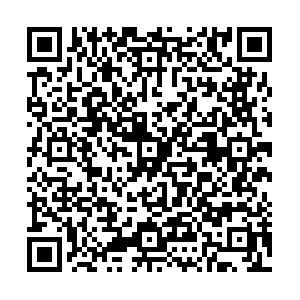Follow-up study on the association of anxiety and depressive symptoms with smartphone addiction among middle school students
-
摘要:
目的 探讨中学生焦虑、抑郁症状与智能手机成瘾关联的变化趋势,为预防中学生智能手机成瘾提供科学依据。 方法 2022—2023年,采用方便抽样与整群抽样相结合的方法从深圳市某区选取27所初中和3所高中8 923名中学生,分别于2022年9月(基线,T1)和2023年9月(随访,T2)进行调查。采用简版智能手机成瘾量表(SAS-SV)、患者健康问卷(PHQ-9)和广泛性焦虑量表(GAD-7)评估中学生智能手机成瘾及焦虑抑郁症状,使用混合效应模型分析中学生焦虑、抑郁症状和智能手机成瘾的关联性。 结果 2022年9月—2023年9月,中学生智能手机成瘾报告率从24.22%升至25.25%(χ2=45.71),智能手机成瘾得分[24.00(16.00, 32.00),25.00(16.00, 33.00)分]、焦虑症状得分[2.00(0.00, 7.00),3.00(0.00, 7.00)分]和抑郁症状得分[3.00(0.00, 8.00),5.00(0.00, 9.00)分]均升高(Z值分别为-17.43,-42.38,-41.57)(P值均 < 0.05)。中学生焦虑、抑郁症状等级分布在2022和2023年差异均有统计学意义(χ2值分别为85.15,106.85,P值均 < 0.05)。混合效应模型结果显示,在调整年龄、性别、家庭背景等协变量后,中学生焦虑和抑郁症状与智能手机成瘾存在剂量—反应关联,轻度焦虑症状(OR=3.22)、中重度焦虑症状(OR=5.36)及轻度抑郁症状(OR=3.32)、中重度抑郁症状(OR=6.13)中学生的智能手机成瘾风险均升高;交互效应分析发现,焦虑抑郁症状共存时的中学生智能手机成瘾风险增加至无焦虑抑郁症状组的5.60倍(OR=5.60),32%的联合风险归因于焦虑和抑郁症状协同作用(S=1.64,AP=0.32)(P值均 < 0.05)。 结论 焦虑、抑郁症状与中学生智能手机成瘾均存在关联,两者对智能手机成瘾存在协同作用。应提高对中学生情绪问题和智能手机成瘾的关注。 Abstract:Objective To investigate the changing trends for associations of anxiety and depressive symptoms with smartphone addiction among middle school students, so as to provide a scientific basis for preventing smartphone addiction in middle school students. Methods From 2022 to 2023, a method of combining convenient sampling with cluster sampling was used to select 8 923 middle school students from 27 junior high schools and 3 senior high schools in a district of Shenzhen City between September 2022 (baseline, T1) and September 2023 (follow-up, T2). The Smartphone Addiction Scale-Short Version (SAS-SV), Patients Health Questionnaire-9 Item (PHQ-9), and Generalized Anxiety Disorder 7-item Scale (GAD-7) were administered to assess smartphone addiction, anxiety and depressive symptoms. Mixed-effects models were used to analyze the association of anxiety and depressive symptoms with smartphone addiction among middle school students. Results From September 2022 to September 2023, the reported prevalence of smartphone addiction increased from 24.22% to 25.25% (χ2=45.71); and smartphone addiction scores [24.00(16.00, 32.00), 25.00(16.00, 33.00)], anxiety symptom scores [2.00(0.00, 7.00), 3.00(0.00, 7.00)] and depressive symptom scores[3.00(0.00, 8.00), 5.00(0.00, 9.00)] all significantly increased (Z=-17.43, -42.38, -41.57) (all P < 0.05). There were statistically significant difference in the distribution of anxiety and depression symptom levels among middle school students in 2022 and 2023 (χ2=85.15, 106.85, both P < 0.05). After adjusting for covariates such as age, gender and family background, mixed-effects models revealed dose-response associations of anxiety and depressive symptoms with smartphone addiction among middle school students: mild anxiety symptom(OR=3.22), moderate-to-severe anxiety symptom (OR=5.36), mild depressive symptom (OR=3.32) and moderate-to-severe depressive symptom (OR=6.13) were significantly associated with higher risks of smartphone addiction (all P < 0.05). Interaction effect analysis found that co-existing anxiety and depressive symptoms synergistically increased addiction risk by 5.60 times (OR=5.60) compared to the asymptomatic group, with 32% of the combined risk attributable to their interaction (S=1.64, AP=0.32)(both P < 0.05). Conclusions Anxiety and depressive symptoms are significantly associated with smartphone addiction, exhibiting a synergistic effect. Attention should be paid to emotional issues and smartphone addiction among middle school students. -
Key words:
- Anxiety /
- Depression /
- Cellular phone /
- Behavior, addictive /
- Students
1) 利益冲突声明 所有作者声明无利益冲突。 -
表 1 中学生焦虑、抑郁症状与SA之间的混合效应模型分析[β值(95%CI),n=8 923]
Table 1. Mixed-effects model analysis of anxiety and depressive symptoms with smartphone addiction among middle school students[β(95%CI), n=8 923]
自变量 选项 SA得分 是否SA 粗模型 调整模型 粗模型 调整模型 量表得分 焦虑症状 0.88(0.85~0.91) 0.84(0.81~0.87) 1.15(1.14~1.16) 1.14(1.14~1.15) 抑郁症状 0.77(0.75~0.80) 0.74(0.71~0.76) 1.13(1.13~1.14) 1.13(1.12~1.14) 焦虑症状等级 轻度 7.36(7.02~7.69) 7.14(6.80~7.47) 3.36(3.11~3.64) 3.22(2.97~3.49) 中重度 10.13(9.68~10.58) 9.86(9.40~10.31) 5.55(5.03~6.13) 5.36(4.84~5.92) 抑郁症状等级 轻度 7.17(6.84~7.49) 7.00(6.67~7.33) 3.46(3.18~3.76) 3.32(3.05~3.62) 中重度 10.62(10.22~11.02) 10.39(9.98~10.79) 6.36(5.79~6.98) 6.13(5.57~6.74) 注: P值均 < 0.05。 表 2 中学生焦虑与抑郁症状对SA的联合影响[OR值(95%CI),n=8 923]
Table 2. Joint effect of anxiety and depressive symptoms on smartphone addiction among middle school students[OR(95%CI), n=8 923]
自变量 粗模型 调整模型 无焦虑症状+无抑郁症状 1.00 1.00 有焦虑症状+无抑郁症状 2.21(1.86~2.61) 2.16(1.82~2.56) 无焦虑症状+有抑郁症状 2.71(2.42~3.05) 2.64(2.35~2.97) 有焦虑症状+有抑郁症状 5.78(5.13~6.28) 5.60(5.13~6.11) RERI值(95%CI) 1.86(1.34~2.38) 1.80(1.28~2.31) AP值(95%CI) 0.32(0.24~0.40) 0.32(0.24~0.40) S值(95%CI) 1.64(1.39~1.92) 1.64(1.39~1.94) 注:P值均 < 0.05。 -
[1] HENG Y, ZHU Z. Progress of research on psychological intervention for smartphone addiction in adolescents[J]. Pac Int J, 2024, 7(3): 126-132. doi: 10.55014/pij.v7i3.633 [2] 郑秀秀, 闫风武, 周芸芸, 等. 青少年手机成瘾流行病学及健康危害的研究进展[J]. 中国儿童保健杂志, 2022, 30(5): 526-530.ZHENG X X, YAN F W, ZHOU Y Y, et al. Research progress in the concept, epidemiology and health hazards of smart phone addiction on adolescents[J]. Chin J Child Health Care, 2022, 30(5): 526-530. (in Chinese) [3] 熊思成, 张斌, 姜永志, 等. 手机成瘾流行率及其影响因素的元分析[J]. 心理与行为研究, 2021, 19(6): 802-808.XIONG S C, ZHANG B, JIANG Y Z, et al. Global prevalence of mobile phone addiction: a Meta-analysis[J]. Stud Psychol Behav, 2021, 19(6): 802-808. (in Chinese) [4] 杨琪琪, 郭猛, 张志清. 儿童青少年焦虑与抑郁相关研究热点与趋势[J]. 中国临床药理学杂志, 2024, 40(15): 2269-2272.YANG Q Q, GUO M, ZHANG Z Q. Research hotspots and trends related to anxiety and depression in children and adolescents[J]. Chin J Clin Pharmacol, 2024, 40(15): 2269-2272. (in Chinese) [5] SEO D G, PARK Y, KIM M K, et al. Mobile phone dependency and its impacts on adolescents' social and academic behaviors[J]. Comput Hum Behav, 2016, 63: 282-292. doi: 10.1016/j.chb.2016.05.026 [6] 陈凤, 赵若兰. 手机依赖对青少年心理健康的影响及应对[J]. 百科知识, 2024(30): 56-57.CHEN F, ZHAO R L. The impact of mobile phone dependence on adolescent mental health and coping strategies[J]. Encycl Knowl, 2024(30): 56-57. (in Chinese) [7] 项明强, 王梓荣, 马奔. 智能手机依赖量表中文版在青少年中的信效度检验[J]. 中国临床心理学杂志, 2019, 27(5): 959-964.XIANG M Q, WANG Z R, MA B. Reliability and validity of the Chinese version of the Smartphone Addiction Scale in adolescents[J]. Chin J Clin Psychol, 2019, 27(5): 959-964. (in Chinese) [8] WANG W, BIAN Q, ZHAO Y, et al. Reliability and validity of the Chinese version of the Patient Health Questionnaire (PHQ-9) in the general population[J]. Gen Hosp Psychiatry, 2014, 36(5): 539-544. doi: 10.1016/j.genhosppsych.2014.05.021 [9] 何筱衍, 李春波, 钱洁, 等. 广泛性焦虑量表在综合性医院的信度和效度研究[J]. 上海精神医学, 2010, 22(4): 200-203.HE X Y, LI C B, QIAN J, et al. Reliability and validity of a Generalized Anxiety Disorder Scale in general hospitals outpatients[J]. Shanghai Arch Psychiatry, 2010, 22(4): 200-203. (in Chinese) [10] 赵劭娟, 吴晓瑛, 李琴, 等. 吸烟量和多巴胺受体基因多态性与向心性肥胖的关联及交互作用[J]. 中国慢性病预防与控制, 2015, 23(4): 266-270.ZHAO S J, WU X Y, LI Q, et al. Relationship and interaction between smoking quantity or dopamine receptor D1 gene polymorphisms with abdominal obesity[J]. Chin J Prev Control Chronic Dis, 2015, 23(4): 266-270. (in Chinese) [11] WHO. Mental health and COVID-19: early evidence of the pande-mic's impact: scientific brief, 2 March 2022[R]. Geneva: World Health Organization, 2022. [12] 常原鸣. 多元参与视角下深圳市青少年心理健康管理问题及对策研究[D]. 武汉: 华中师范大学, 2023.CHANG Y M. Research on problems and countermeasures of mental health management for adolescent in Shenzhen City from the perspective of multiple participation[D]. Wuhan: Central China Normal University, 2023. (in Chinese) [13] 周香香. 高中生智能手机成瘾对抑郁情绪产生的影响: 以体力活动与睡眠时间为中介[D]. 扬州: 扬州大学, 2024.ZHOU X X. The impact of smartphone addiction on depression in high school students: mediated by physical activity and sleep quality[D]. Yangzhou: Yangzhou University, 2024. (in Chinese) [14] YANG X, ZHOU Z, LIU Q, et al. The impact of smartphone addiction on depression in high school students[J]. J Child Fam Stud, 2019, 28: 822-830. doi: 10.1007/s10826-018-01323-2 [15] 马玲, 付瑞孜, 徐佳淇, 等. 中学生网络游戏成瘾的影响因素分析[J]. 华西医学, 2024, 39(6): 934-938.MA L, FU R Z, XU J Q, et al. Analysis of the influencing factors of Internet game addiction among middle school students[J]. West China Med J, 2024, 39(6): 934-938. (in Chinese) [16] ZHOU T, ZHANG Q, ZHAO N, et al. Statistical analysis of a large-scale mental health survey among adolescents in Zigong, a less-developed city in China[J]. J Evid Based Med, 2025, 18(1): e70010. doi: 10.1111/jebm.70010 [17] ELHAI J D, DVORAK R D, LEVINE J C, et al. Problematic smartphone use: a conceptual overview and systematic review of relations with anxiety and depression psychopathology[J]. J Affect Disord, 2017, 207: 251-259. doi: 10.1016/j.jad.2016.08.030 [18] 李晓静, 刘畅. 手机如何妨害青少年的睡眠?基于全国数据的实证研究[J]. 中国青年研究, 2023(7): 26-33.LI X J, LIU C. How mobile phones hurt teenagers' sleep?An empirical study based on national data[J]. China Youth Stud, 2023(7): 26-33. (in Chinese) [19] 苏雯靓, 罗丽霞, 晏妮, 等. 重庆市儿童青少年广泛性焦虑障碍量表(GAD-7)调查及其影响因素研究[J]. 精神医学杂志, 2022, 35(2): 158-162.SU W L, LUO L X, YAN N, et al. Investigation and analysis of the influencing factors on anxiety symptoms in children and adolescents in Chongqing City through Generalized Anxiety Disorder (GAD-7)[J]. J Psychiatry, 2022, 35(2): 158-162. (in Chinese) [20] 魏艳萍, 崔宝今, 薛将, 等. 病人健康问卷抑郁量表在青少年中的应用[J]. 四川精神卫生, 2023, 36(2): 149-155.WEI Y P, CUI B J, XUE J, et al. Application analysis of the 9-item Patient Health Questionnaire in adolescents[J]. Sichuan Ment Health, 2023, 36(2): 149-155. (in Chinese) [21] ELHAI J D, LEVINE J C, DVORAK R D, et al. Fear of missing out, need for touch, anxiety and depression are related to problematic smartphone use[J]. Comput Hum Behav, 2016, 63: 509-516. doi: 10.1016/j.chb.2016.05.079 [22] MATAR B J, JAALOUK D. Depression, anxiety, and smartphone addiction in university students: a cross sectional study[J]. PLoS One, 2017, 12(8): e0182239. doi: 10.1371/journal.pone.0182239 [23] 王欣. 青少年学习倦怠, 游戏动机与网络游戏障碍的关系研究[D]. 长沙: 中南大学, 2023.WANG X. The relationship among academic burnout, gaming motives and Internet gaming disorder in adolescents[D]. Changsha: Central South University, 2023. (in Chinese) [24] CHEN I H, PAKPOUR A H, LEUNG H, et al. Comparing generalized and specific problematic smartphone/Internet use: longitudinal relationships between smartphone application-based addiction and social media addiction and psychological distress[J]. J Behav Addict, 2020, 9(2): 410-419. doi: 10.1556/2006.2020.00023 [25] GENG Y, GU J, WANG J, et al. Smartphone addiction and depression, anxiety: the role of bedtime procrastination and self-control[J]. J Affect Disord, 2021, 293: 415-421. doi: 10.1016/j.jad.2021.06.062 [26] LI G, HOU G, YANG D, et al. Relationship between anxiety, depression, sex, obesity, and Internet addiction in Chinese adolescents: a short-term longitudinal study[J]. Addict Behav, 2019, 90: 421-427. doi: 10.1016/j.addbeh.2018.12.009 [27] GE J, LIU Y, CAO W, et al. The relationship between anxiety and depression with smartphone addiction among college students: the mediating effect of executive dysfunction[J]. Front Psychol, 2023, 13: 1033304. doi: 10.3389/fpsyg.2022.1033304 [28] 侯娟, 朱英格, 方晓义. 手机成瘾与抑郁: 社交焦虑和负性情绪信息注意偏向的多重中介作用[J]. 心理学报, 2021, 53(4): 362-373.HOU J, ZHU Y G, FANG X Y. Mobile phone addiction and depression: multiple mediating effects of social anxiety and attentional bias to negative emotional information[J]. Acta Psychol Sin, 2021, 53(4): 362-373. (in Chinese) -

 点击查看大图
点击查看大图
计量
- 文章访问数: 4
- HTML全文浏览量: 5
- PDF下载量: 0
- 被引次数: 0





 下载:
下载: